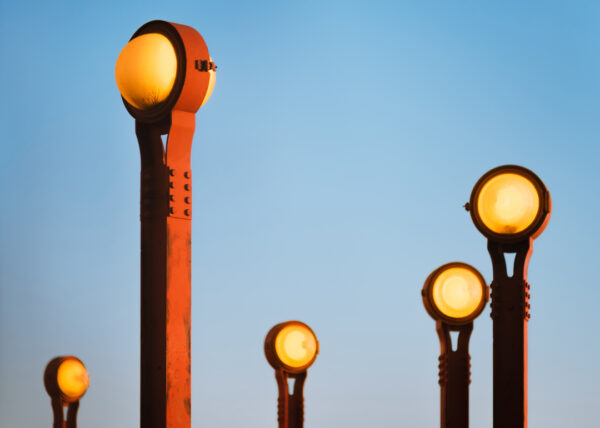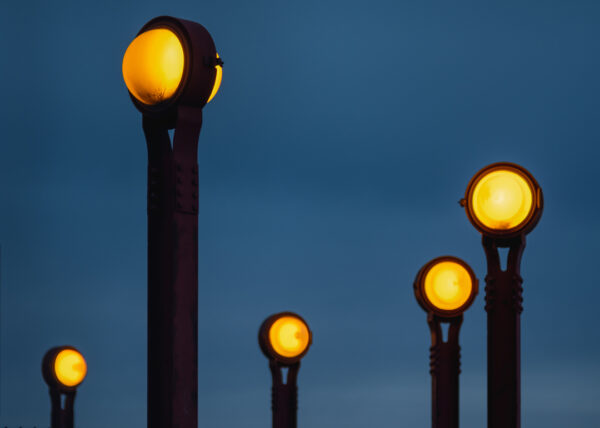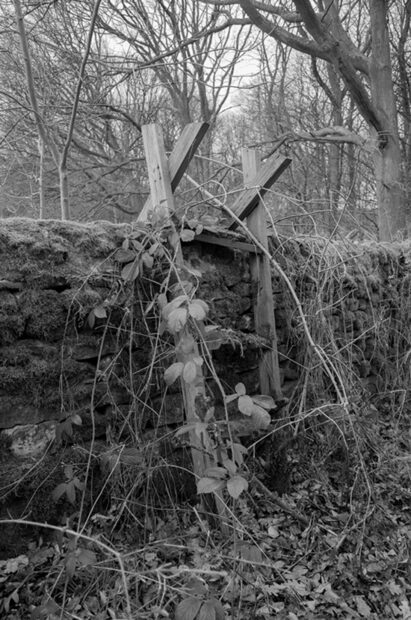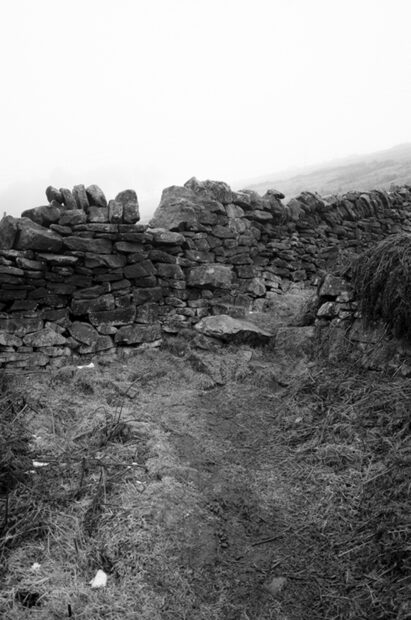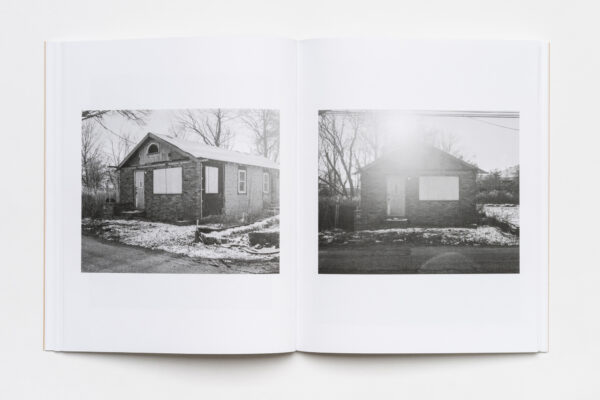The Bridge by Michael Yuan. Published by The Eriskay Connection, 2022.
The best assignment I was given as an undergraduate photography student, one that I’ve tried to emulate when I teach, was handed out by the subject of my last review. We were to pick a place that meant something to us, photograph it extensively, and return to class with contact sheets. Together we selected our best pictures, and then came a surprise: we had to return to the same location and do it all over again. This went on for the entire semester. We never got to go anywhere else. First came frustration, then defeat, and then the good pictures started to emerge. By exhausting the obvious, photographers may discover new ways of approaching even the most familiar subjects. It’s possible to push past the limits of what you think photography can do.
I’m not sure what Michael Yuan’s methods were when he made The Bridge, but the book illustrates the merits of an exhaustive approach. Not only was Yuan able to create a curious, syncopated book out of a single subject, he was able to do so while photographing somewhere that had absolutely already been photographed too often by too many people. As the incessant orange divulges, these are photographs of the Golden Gate Bridge. Yet there is no history, no landscape, no road. By denying the structure any external context and slicing it down into disconnected puzzle pieces, Yuan makes a solid case that it might still be possible to make pictures of anything. The highlight is a study of some bristling beacons photographed at different times of day — I didn’t know the Golden Gate had those. Celebratory and often dramatic, it is a shockingly modernist project. I mean, we’re looking at a dang bridge. Why the hell not!
****
Diane Arbus Documents, edited by Max Rosenberg. Published by David Zwirner Books/Fraenkel, 2022.
In this nearly 500-page, mostly chronological, scrapbook of essays and press clippings related to the career of Diane Arbus, the artist is dead by page 56. When it comes to Arbus, the photography world has long been following a ghost. The ream of newspaper and magazine facsimiles fleshing out Documents speaks well to the lasting importance of, and fervor for, her photographs. In fact, this $95 compendium’s main objective seems to be reminding an audience of collectors that Diane Arbus is important. Most folks with an interest in good pictures could come to that conclusion by spending a few minutes with a copy of Arbus’s Aperture Monograph, which is still in print, runs less than half the price of this literally shiny object, and actually has photographs in it.
Documents was released in conjunction with an exhibition at David Zwirner Gallery that recreated Arbus’s posthumous 1972 MoMA exhibition in its entirety. I went to the show, felt wildly lucky to at last see the prints in person, cried a little. Even so, it was hard to reconcile such deeply personal work by an artist who has long lacked agency with its new context in the guts of an ultra-commercial behemoth. Documents is all context. It aims to break down misconceptions around the artist’s story, but there’s a fair amount of mythmaking in the presentation.
The book could hold value for a researcher or completist. There really has been a dump truck of Arbus coverage over the past half century, and it appears to all be here.
****
Overpass by Sam Contis. Published by Aperture, 2022.
Here is a new addition to the body of literature relevant to psychogeographic Britain that also includes stuff by big dogs like William Blake and W.G. Sebald. Psychogeography, reductively the practice of wandering through a chosen terrain and remarking on what happens, has French Marxist origins and tends to focus on urban landscapes. Still, the pursuit feels inextricably British due to all the work on the topic that’s been done in the UK (Iain Sinclair is worth a read). So I’m here in Virtual Texas, deciding Sam Contis’s investigation of the English countryside counts.
Notably, her book gets there entirely via photographs. She moves readers steadily through farmland as she amasses a mountain of pictures, marking the places where man-made boundaries are broken. Time passes, at some point it begins to snow, the landscape remains. So does Contis, still coursing over walls and through fences. She seems to be led along by the event of her own photographing.
At just under 7 x10 inches, Overpass is just large enough to allow a person to dig into individual photographs. At the same time it still handles like a book book. It’s the absolutely right format for the project, especially given the volume of pictures. The just-compact form conveys an impression that this book exists not to be looked through, but lived with.
****
The Sea, The Sea by Casey Dorobek. Published by RITA, 2021.
Another one that could bolster arguments about publications full of photographs being literature, The Sea, The Sea is rather forward with its bookish inclinations. It shares its title with an Iris Murdoch novel and contains an epigraph from Denis Johnson’s Resuscitation of A Hanged Man between its two distinct halves. The quote by Johnson is helpful when parsing Dorobek’s pictures:
…a beach made not so much of sand as of the long seaside grass flooded by water and killed by water and heaped by the motion of water onto the shore and abandoned there, like a long, pointless rope, by water.
The photographs show a built landscape fraying at its seams in the midst of a long assault by an unthinking ocean. This is made explicit by a series of small and thoughtful texts, but a reader could arrive at that conclusion through the plates alone. The Sea, The Sea shifts between different modes of picture logic as it inches toward its thesis. The first section, with its staggered repetition and light stalking of central subjects, moves a bit like a Paul Graham sequence. These pictures, from a horse track, are a woozy foil to what follows. In the second and longer half, Dorobek steps back into a looser, less declarative rhythm. Here, there is accumulation — of water in a dirty municipal basin, but also of discourse between pictures.
“A long, pointless rope,” a graceful traipse through a slow and stupid collapse. We have pony players, flood control, an older SUV being slowly swallowed by the tide. Put all together, the not-so-secret message is that the real belligerent in The Sea, The Sea is not the sea. As Dorobek himself says in the book’s introduction, “capital protects capital.” The call is coming from inside the seawall. (Another Dorobek, who goes by S.L., slams the door shut with a plainly-worded postscript on climate change that should be scattered from helicopters.)


